Yesterday's Dr. Gridlock column, "Metro Riders ask what they're paying for," recounts the experience of Colin Helmer of Bethesda, who entered the Foggy Bottom Metro station to catch a train. But there were multiple problems on the Blue, Orange, and Red Lines (his intent was to transfer to the Red Line at Metro Center) with concomitant massive delays, so he left the station and took the bus instead. He grouses because going in and out of a station without riding still triggers a cost.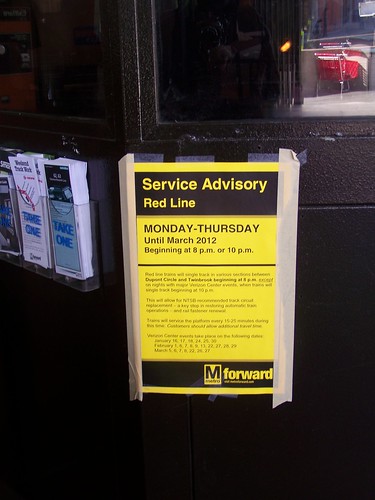
In the region, we all know about the degradation of service on the Metro system. This came up in the context of the recent hearings on fare increases ("Metro riders blast fare hikes as unjustified" from the Post). The degradation results from a number of reasons:
• the impact of under-funding maintenance (not WMATA's fault really, they predicted the result, but the jurisdictions funding WMATA didn't address the problem) for many years reached the point where it can't be ignored, and there are many years of repairs ahead of us, resulting in track and station closures at nights and weekends;
• the need to run the Metro trains on manual, for the most part, slowing the system and reducing ride quality (this is a result of the need to replace track circuits that monitor train placement, a circuit failure caused the crash in June 2009 that killed 8 people);
• more trains go out of service during the week because the cars are old;
• and because the system was set up with limited redundancy--only two tracks--a train failure can have significant increasing and cascading negative effects on the system, delaying service and riders across the system;
• not to mention how budget problems have led to reductions in service, especially in the evenings and weekends, increasing wait times and train "overcrowding."
So many times, it makes sense to take a bus or bike (bike sharing creates options if you don't have your own) instead.
Now it stinks that a small charge was deducted from Colin's SmarTrip card and he doesn't have any recourse.
Granted WMATA communications staff have a difficult, almost impossible job.
But if the system wants to maintain support during this trying period, it needs to do more than run image ads in the Express and on Metro cars and in stations--they need to make fundamental changes to how they provide information to customers so that customers can make better decisions about their options on how to get around.
If trains are down and service is impacted, people need to know.
And the "reporters"--even if WMATA employees--need to be empowered with the authority to put the information out in real-time.
2. The information needs to be pushed out in a variety of ways--on the website (it is, but isn't always accurate), in social media venues, in real-time status displays that aggregate various mobility information (WMATA trains and buses, local buses, bikesharing, other transit options).
And the feeds should also be made available to local radio and television broadcasters for rebroadcast on air, because information on transit availability/uptime/downtime should be made available just as widely and as prominently as information about road status and traffic conditions.
(Of course, people need to get in the habit of looking for this information before going out to catch transit.)
3. And these displays shouldn't just be in the station at and behind the gates, theses displays should be installed at station entrances on the surface--so that people have this information well before they descend into the bowels of the system, and it becomes incredibly hard to get accurate information and a pain in the butt to turn around and get out to embark on another mobility option. Plus, it can cost you, as it did Colin Helmer.
Flickr photo by JG Gordon.
4
. DDOT and Arlington County's Mobility Lab (see "Experimental real-time transit screens come to Arlington and DC" from the MobilityLab blog) has piloted real-time transit information displays located in public and private buildings so that people can know when the next train or bus is going to arrive. (By setting up "transportation zones" you can push out this feed to buildings in areas served by specific transit stops.)Arlington County Mobility Lab real time transit information display at Java Shack in Arlington shows information for subway trains, buses, and bike share.
MTA in New York City is piloting similar kiosks in a number of train (subway and railroad) stations across New York City. Obviously, in certain areas, you want to incorporate railroad transit information also.
5. Note that with information displays, WMATA is moving in the direction of real-time digital display of information, as they have released a RFP for the installation of such displays at bus stops, presumably high profile locations linking subway and bus service, around the region. See "Real-time bus arrival signs are coming to Washington, D.C." from TBD On Foot. The entry includes a link to the RFP documents. Labels: car culture and automobility, customer service, provision of public services, traffic, transit

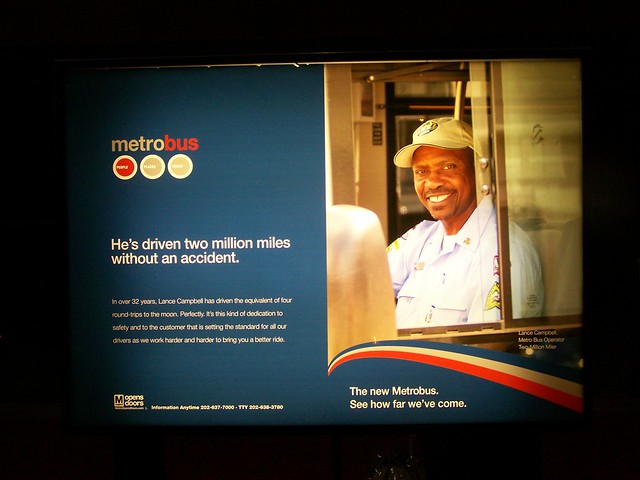
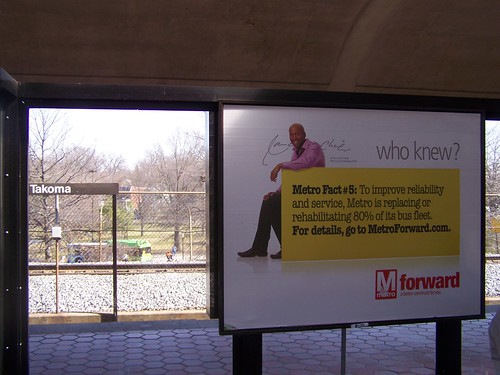
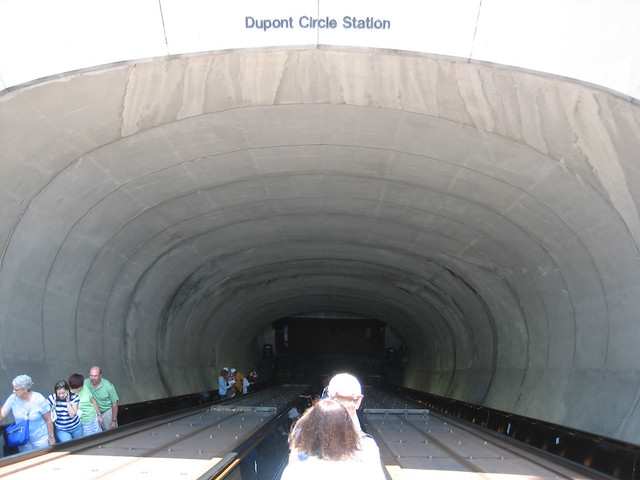
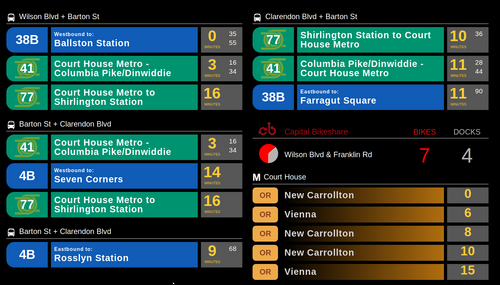




0 Comments:
Post a Comment
<< Home